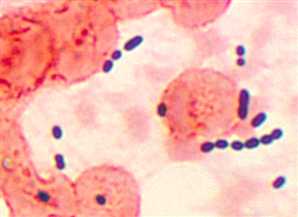标签:
最近,香港一些医院爆出院内感染耐万古霉素肠道链球菌患者人数增加的消息。一旦感染,治疗会很困难,病死率高达30%。这一疫情很快引起广大民众的关注。有网友在网上检索,未找到耐万古霉素的肠道链球菌,却找到了耐万古霉素的肠球菌。又有一些网民检索到,我们吃的乳酸菌中含有这类肠道细菌,于是担心吃乳酸菌会得病。肠链球菌和肠球菌是一回事吗?
肠球菌是消化道的正常菌群
肠球菌是人和动物肠道中的正常菌群,最初是从人类大便里分离出来的。由于这种细菌常常排列成短链状,样子与链球菌相似,故被归为链球菌的D族。因此,人们把这种细菌称为粪肠链球菌。后来,人们发现这种粪链球菌实际上与链球菌有许多不同。1984年人们把它从链球菌中分离出来,形成一个新的肠球菌属,并把粪链球菌改名为粪肠球菌。但有些医生仍然把它称为肠链球菌。
肠球菌是人或动物消化道的正常菌群之一。在健康人的大便中含有大量的肠球菌,每1克粪便中含有106~108个肠球菌。不仅在肠道中,人的口腔、胆囊、女性阴道和子宫也常有肠球菌存在。肠球菌能发酵糖类,产生乳酸,分解蛋白质,帮助消化,参与营养代谢。肠球菌还能产生一些抗菌的蛋白质或肽类,抑制有害细菌生长,阻碍病原微生物接触肠黏膜细胞,保护胃肠道黏膜。我们吃的酸奶中的确含有粪肠球菌。
肠球菌呆错了地方可致病
肠球菌呆在肠道里属于正常菌群,但如果它呆错了地方,就有可能成为我们的敌人,致人生病。在医院里,由于一些有创的医疗操作(如穿刺和手术等)可能把这些正常菌群带到了它不该呆的地方(如尿道、血液、心内膜、腹腔、胆道等),则会引起这些部位的感染,严重时可导致脓毒败血症。有时,也可能因为患者的免疫功能下降,肠球菌自己钻进了它不应该呆的地方(如血液和伤口等),导致败血症或伤口感染。所以,人们又把肠球菌称为条件致病菌。由于这种感染大多发生在医院的患者中,患者本来就有病,一旦病上加病,治疗起来就很困难了。
肠球菌为什么会耐药
肠球菌之所以能在人的肠道中与人共存,是因为它有很强的适应周围环境的本领。肠球菌原本不耐药,但现在的人今天用庆大霉素,明天用红霉素,后天又用万古霉素,天长日久,抵抗力弱的细菌被杀死了,抵抗力强的肠球菌却慢慢适应了这种有抗生素的环境,产生了对抗生素的耐药性。这种耐药的肠球菌不仅自己能抵御抗生素的攻击,而且还可能把这种能力传染给身边其他细菌,使其他细菌也获得了和它一样的耐药性。这种耐药的肠球菌导致的医院内感染,治疗起来就更困难了。在肠球菌广泛耐药以后,人们常常把万古霉素看做是治疗肠球菌感染的最后一种有效药物。但随着万古霉素在临床上的应用,有些肠球菌对万古霉素也产生了耐药性。肠球菌一旦对万古霉素耐药,就意味着它对多种抗生素都产生了耐药,变成了超级耐药细菌,被感染的患者要治疗起来可以说是难上加难,病死率高达30%以上。
滥用抗生素让朋友变敌人
由于医院内的病人抵抗力差,手术等有创的医疗操作较多,使用抗生素的几率也大,因此,耐万古霉素肠球菌感染主要在医院里流行,导致医院内感染,普通老百姓不用过分担心。但是,耐万古霉素肠球菌的流行给我们一个警告:不能滥用抗生素。现在,人们往往有个习惯,稍有不适就到医院输液或吃点抗菌药物。肠球菌和许多细菌与人类共存,它们既是我们的朋友,又可能成为我们的敌人。
https://en.wikipedia.org/wiki/Enterococcus
This photomicrograph reveals cocci-shaped Enterococcus sp. bacteria taken from a pneumonia patient. Enterococcus sp. is a common, gram-positive bacterium that can normally be found in the bowel and female genital tract. These bacteria can be spread by fecal-oral transmission, contact with infected body fluids or contact with contaminated surfaces.

Enterococcus is a large genus of lactic acid bacteriaof the phylum Firmicutes. Enterococci are Gram-positive cocci that often occur in pairs (diplococci) or short chains, and are difficult to distinguish from streptococci on physical characteristics alone.[2] Two species are common commensal organisms in the intestines of humans: E. faecalis (90-95%) andE. faecium (5-10%). Rare clusters of infections occur with other species, including E. casseliflavus, E. gallinarum, and E. raffinosus.[2]
Enterococci are facultative anaerobic organisms,i.e., they are capable of cellular respiration in both oxygen-rich and oxygen-poor environments.[3]Though they are not capable of forming spores, enterococci are tolerant of a wide range of environmental conditions: extreme temperature (10-45°C), pH (4.5-10.0) and high sodium chlorideconcentrations.[4]
Enterococci typically exhibit gamma-hemolysis on sheep‘s blood agar.[5]
Members of the genus Enterococcus (from Greek?ντερο, éntero, "intestine" and κοκκος,coccos, "granule") were classified as Group DStreptococcus until 1984, when genomic DNA analysis indicated a separate genus classification would be appropriate.[6]
Important clinical infections caused by Enterococcusinclude urinary tract infections, bacteremia,bacterial endocarditis, diverticulitis, andmeningitis.[4][5] Sensitive strains of these bacteria can be treated with ampicillin, penicillin andvancomycin.[7] Urinary tract infections can be treated specifically with nitrofurantoin, even in cases of vancomycin resistance.[8]
From a medical standpoint, an important feature of this genus is the high level of intrinsic antibiotic resistance. Some enterococci are intrinsically resistant to β-lactam-based antibiotics (penicillins, cephalosporins, carbapenems), as well as many aminoglycosides.[5] In the last two decades, particularly virulent strains of Enterococcus that are resistant to vancomycin (vancomycin-resistantEnterococcus, or VRE) have emerged in nosocomialinfections of hospitalized patients, especially in the US.[4] Other developed countries, such as the UK, have been spared this epidemic, and, in 2005, Singapore managed to halt an epidemic of VRE.[9] VRE may be treated with quinupristin/dalfopristin(Synercid) with response rates of approximately 70%.[10] Tigecycline has also been shown to have anti-enterococcal activity as has rifampicin.[citation needed]
Enterococcal meningitis is a rare complication of neurosurgery. It often requires treatment with intravenous or intrathecal vancomycin, yet it is debatable as to whether its use has any impact on outcome: the removal of any neurological devices is a crucial part of the management of these infections.[11] New epidemiological evidence has shown that enterococci are major infectious agent in chronic bacterial prostatitis[citation needed]. Enterococci are able to form biofilm in the prostate gland making their eradication difficult.
| Enterococcus | |
|---|---|
| Classification and external resources | |
| ICD-9-CM | 041.04 |
In bodies of water, the acceptable level of contamination is very low; for example in the state of Hawaii, and most of the United States, the limit for water off its beaches is a five-week geometric mean of 35 colony-forming units per 100 ml of water, above which the state may post warnings to stay out of the ocean.[12] In 2004, Enterococci sp. took the place offecal coliforms as the new USA federal standard for water quality at public saltwater beaches and E. coli at freshwater beaches.[13] It is believed to provide a higher correlation than fecal coliform with many of the human pathogens often found in city sewage.[14]
标签:
原文地址:http://www.cnblogs.com/biopy/p/4638286.html